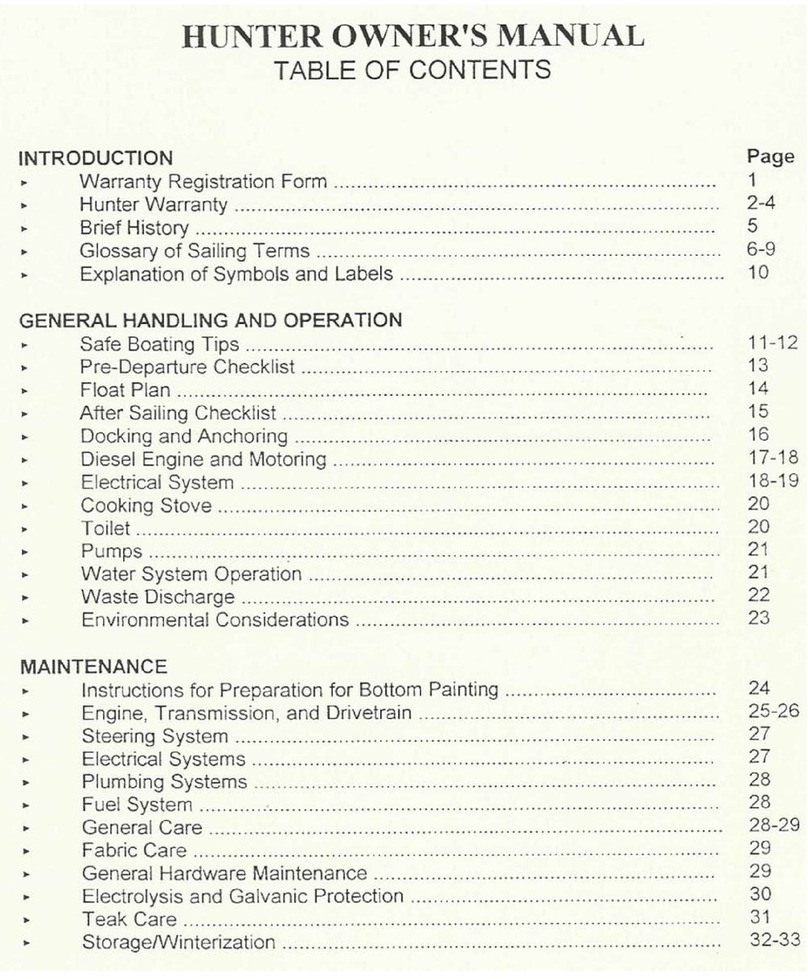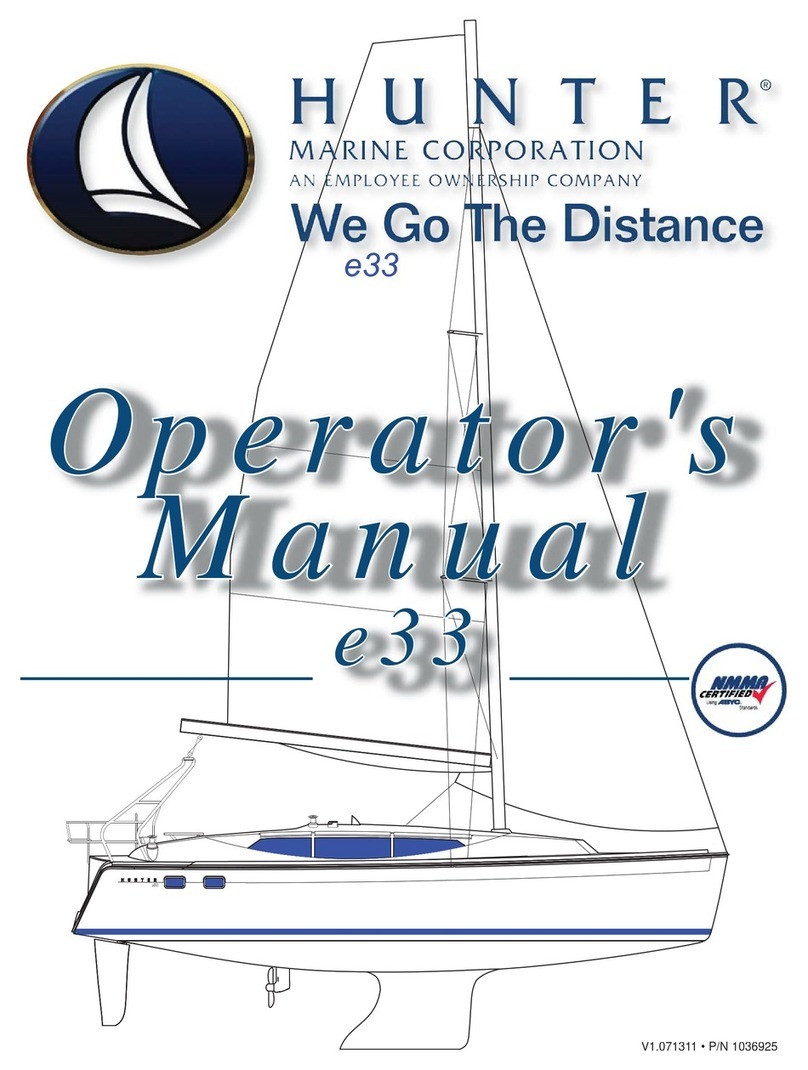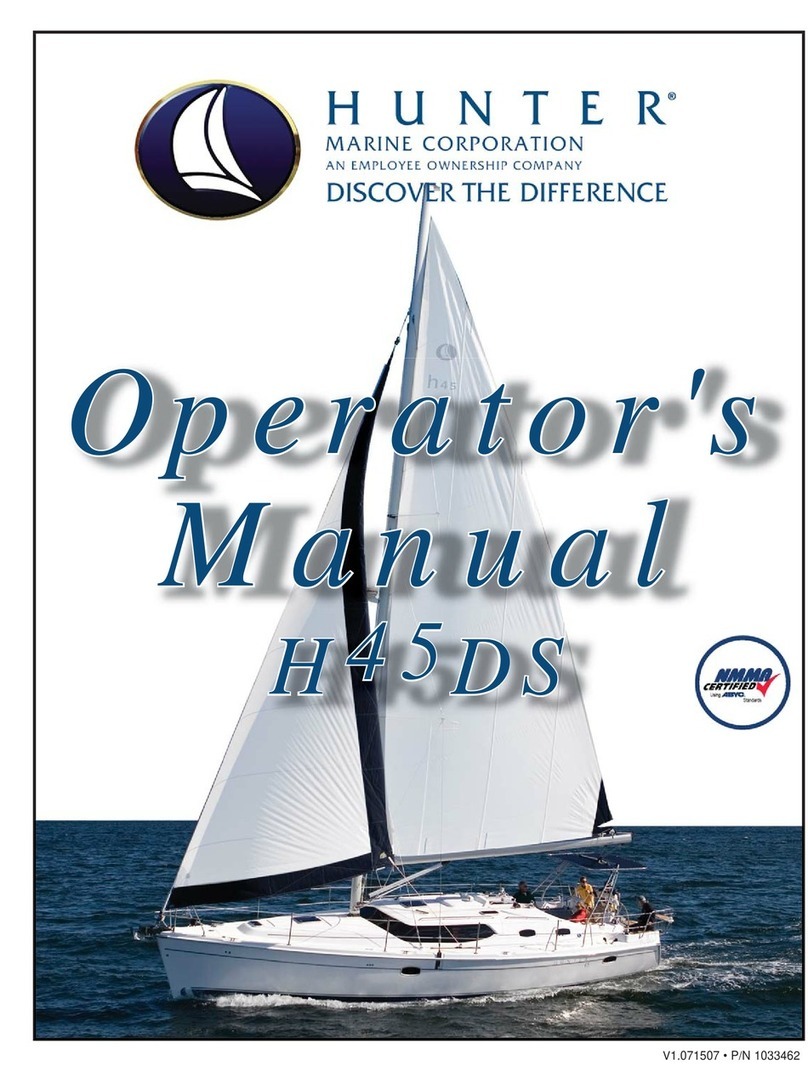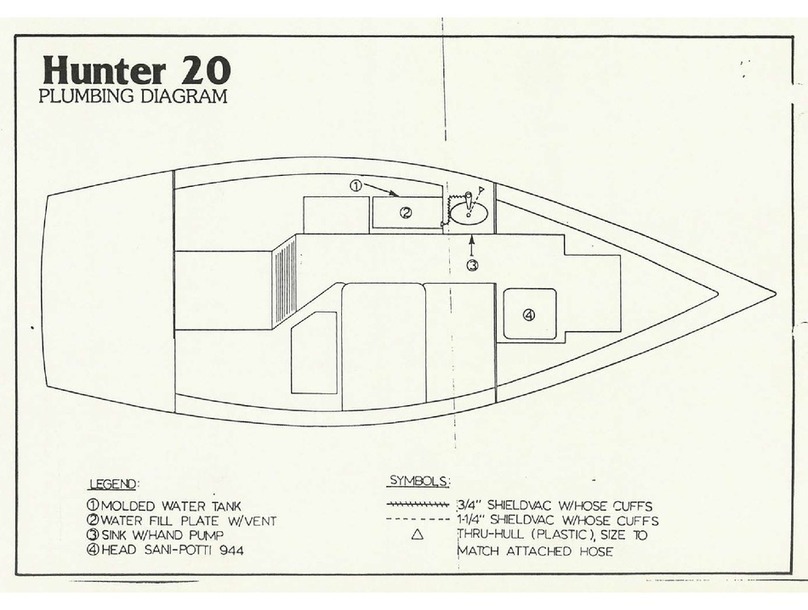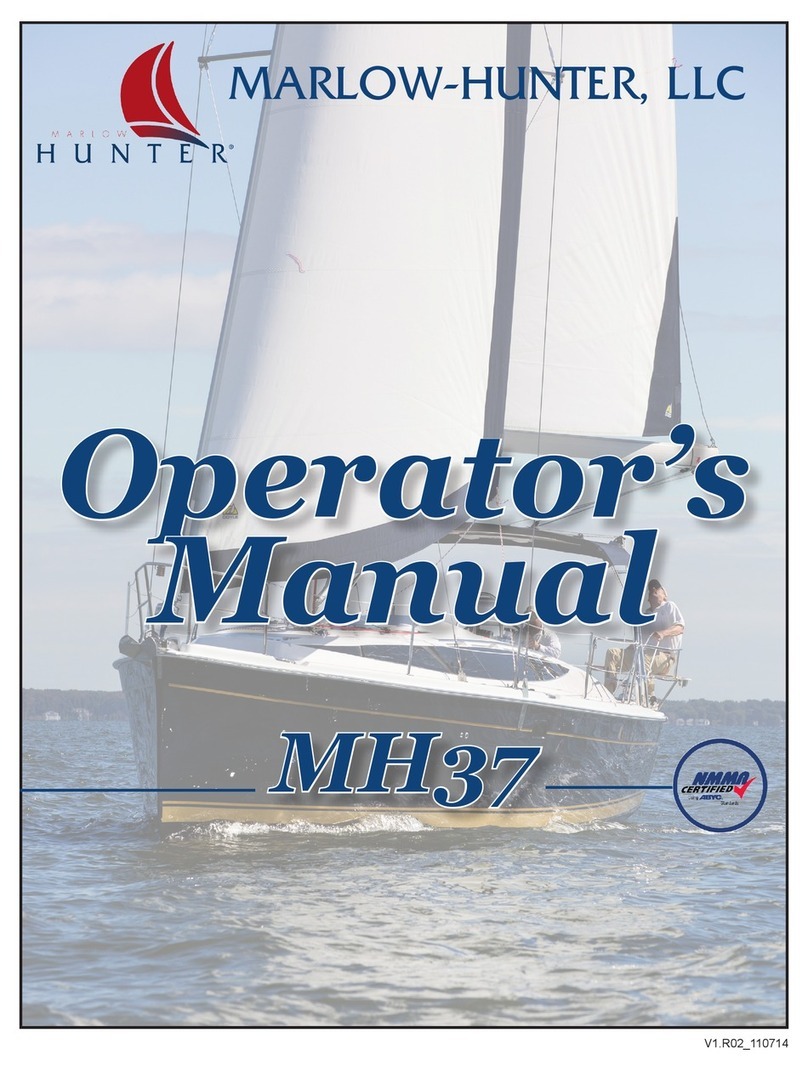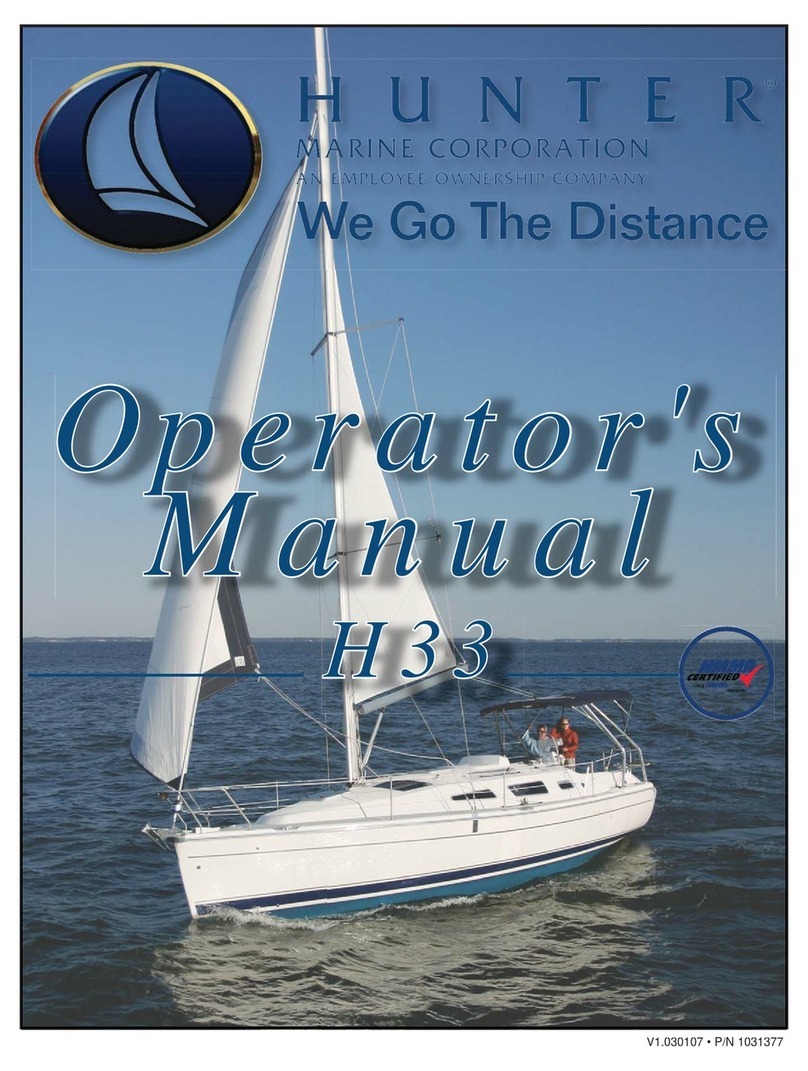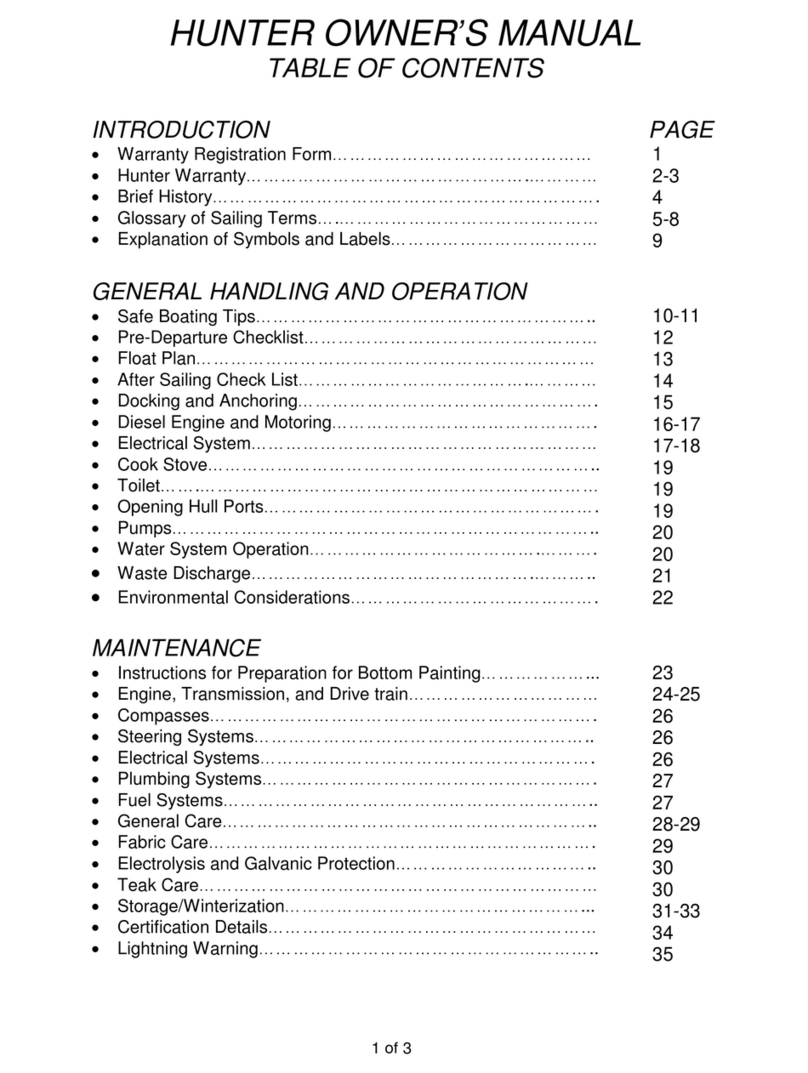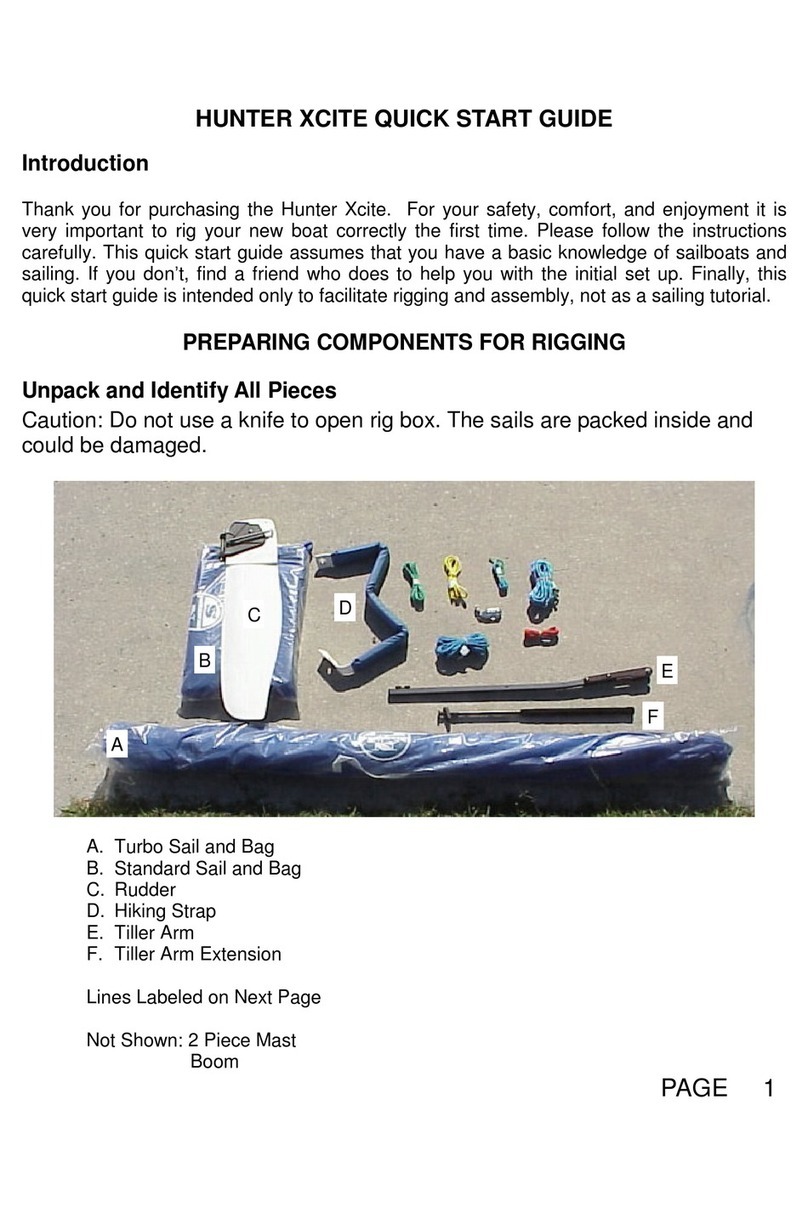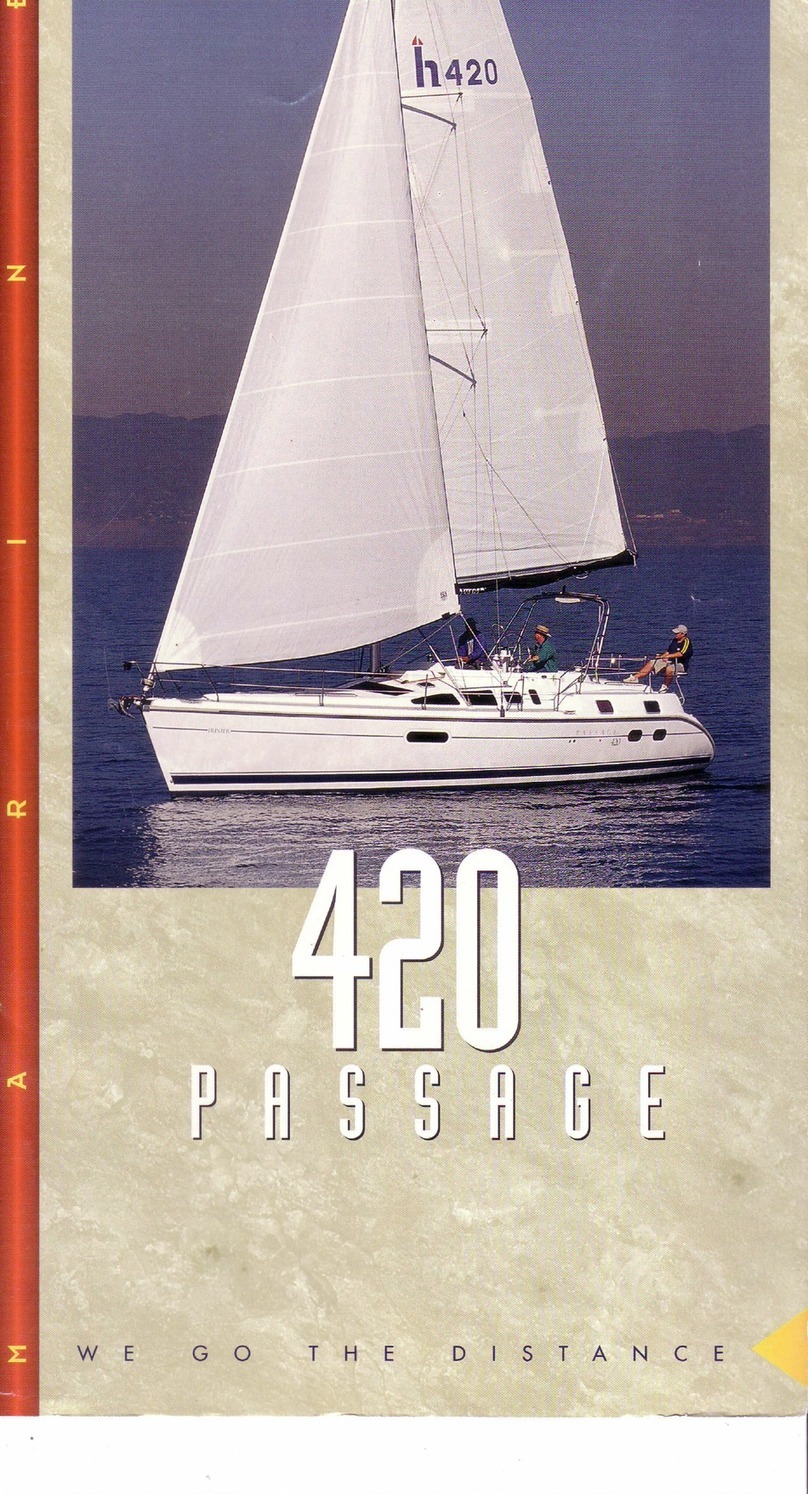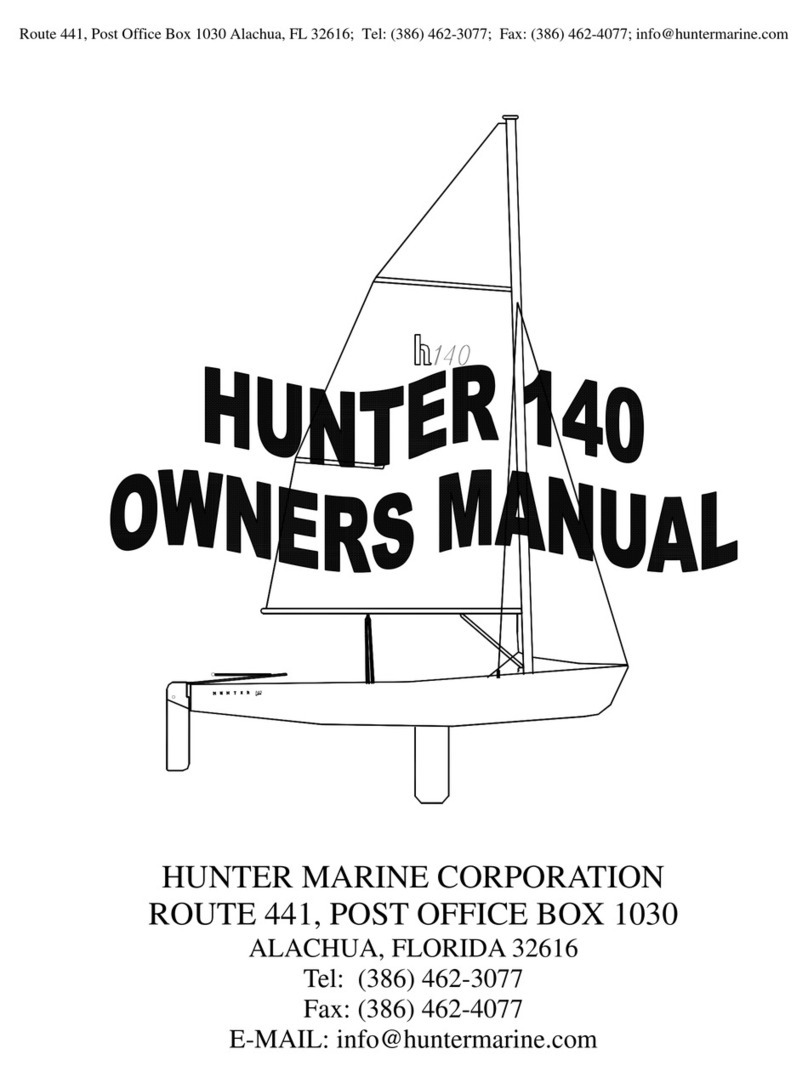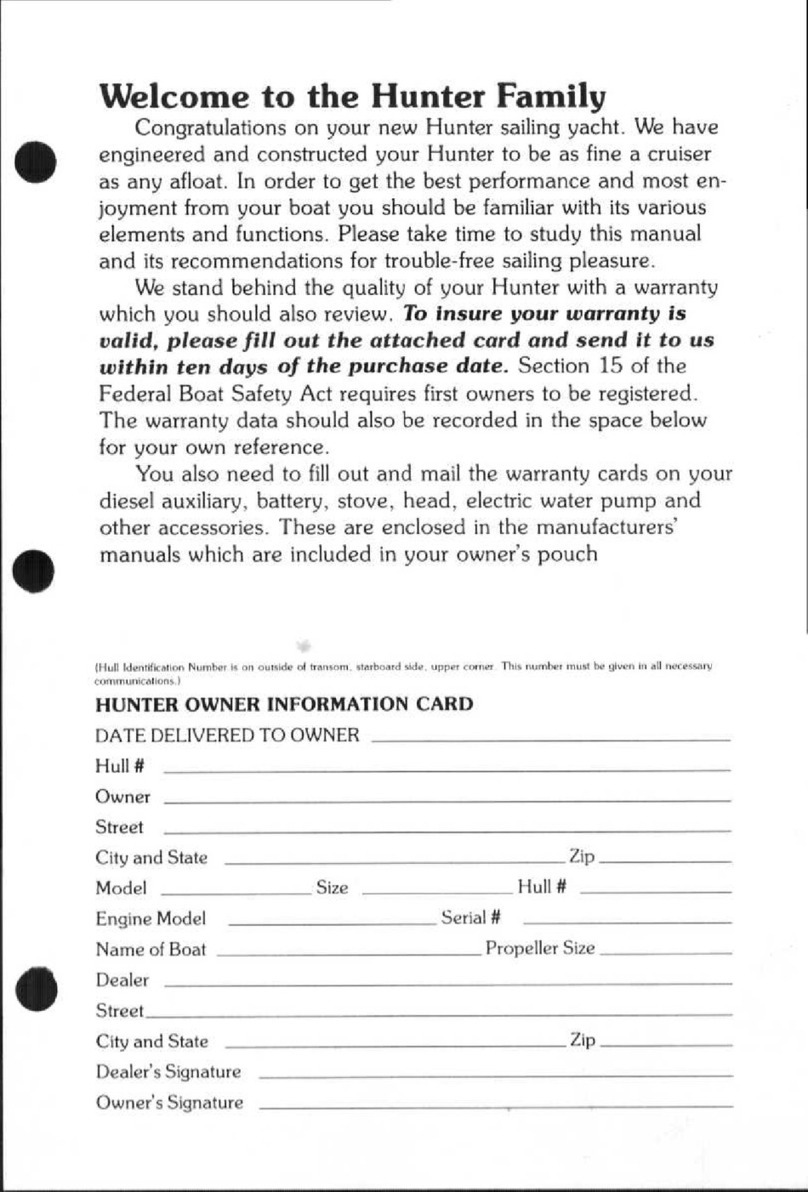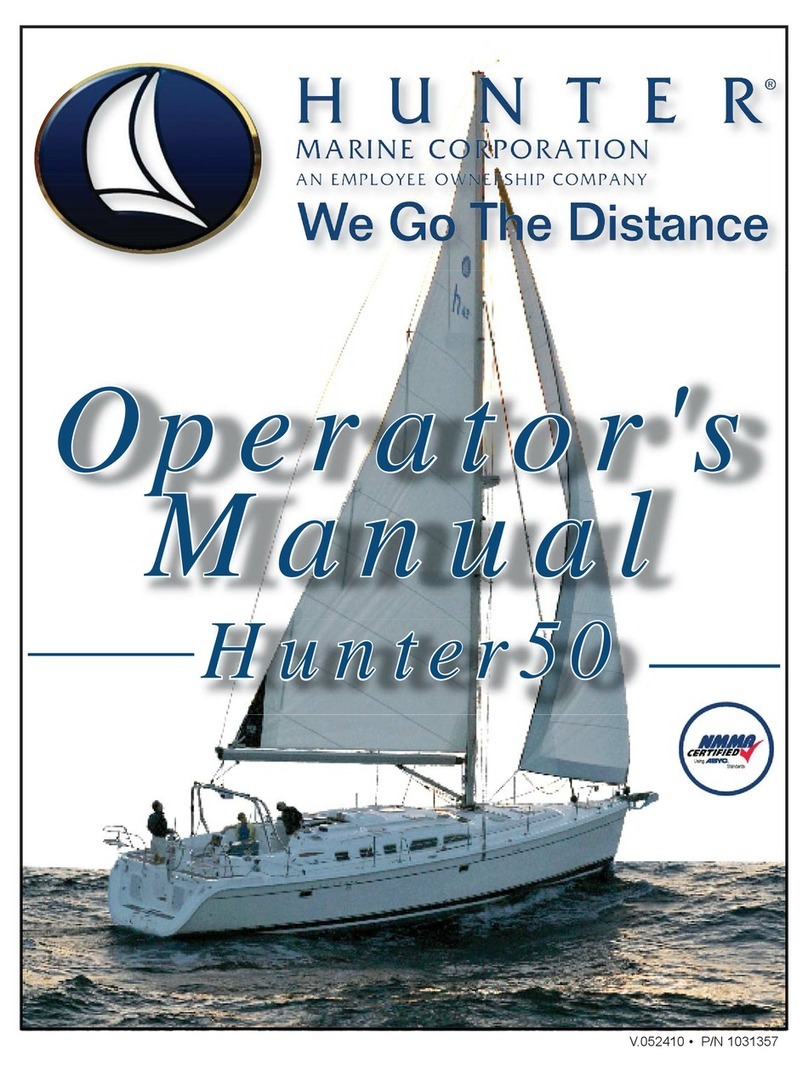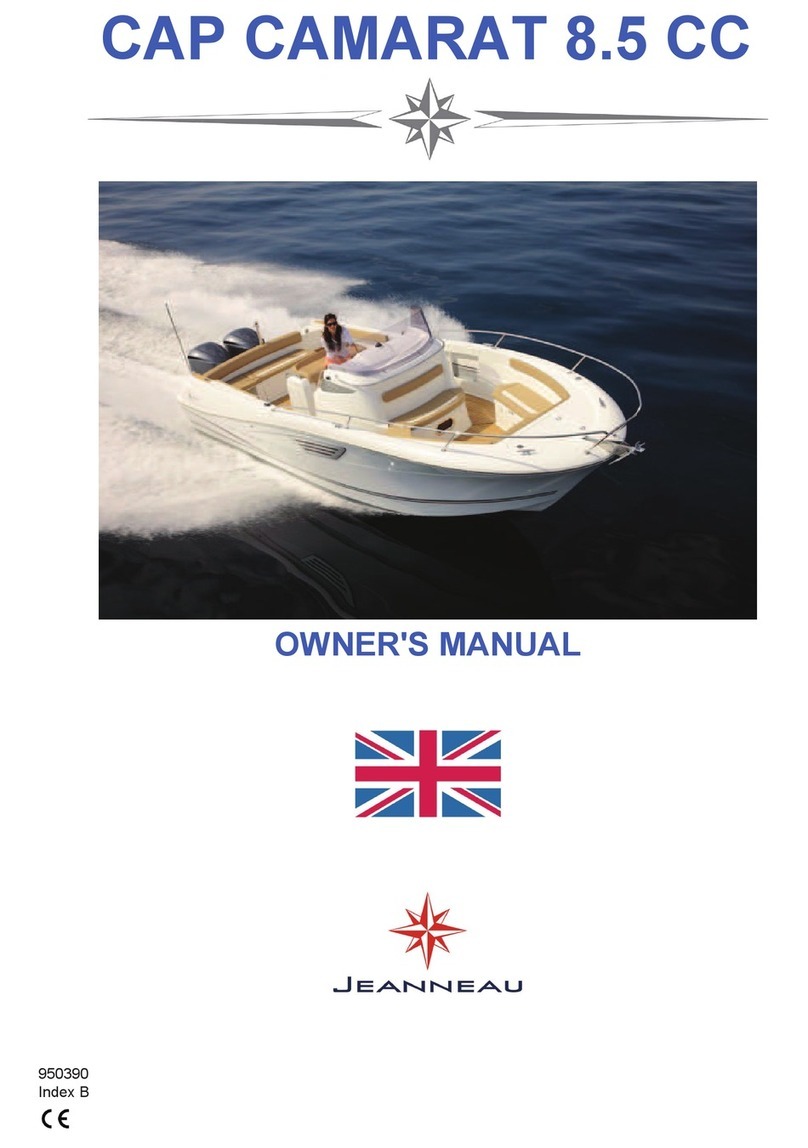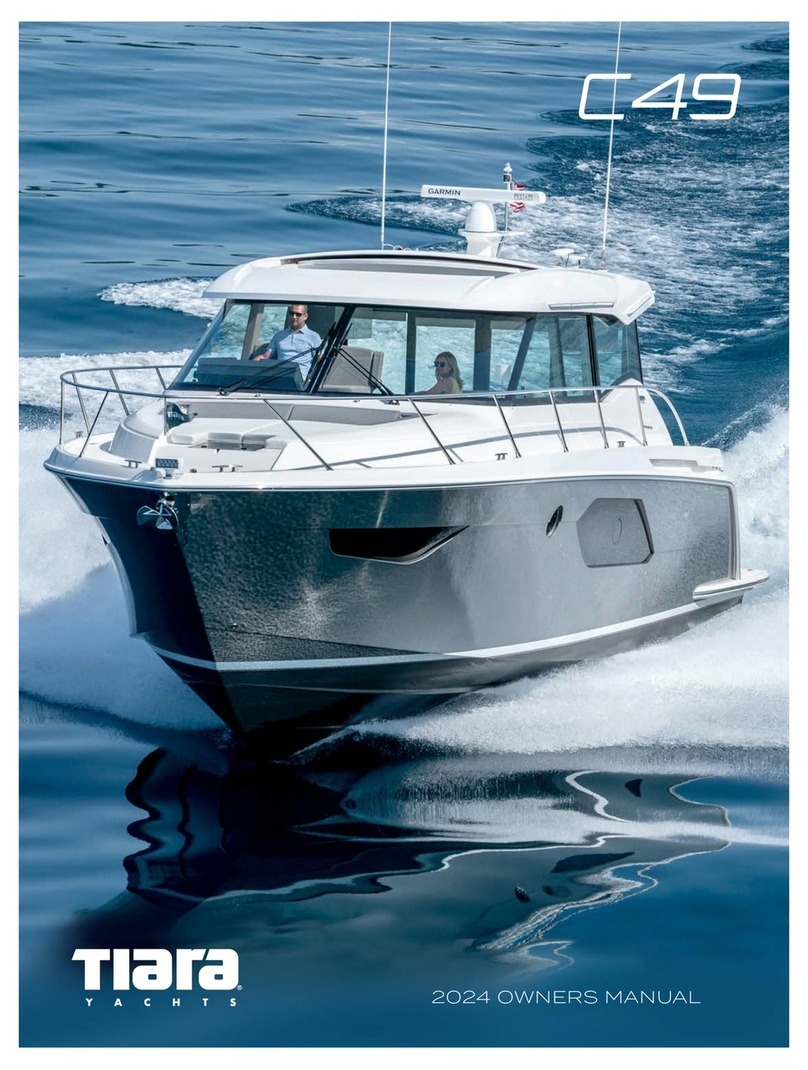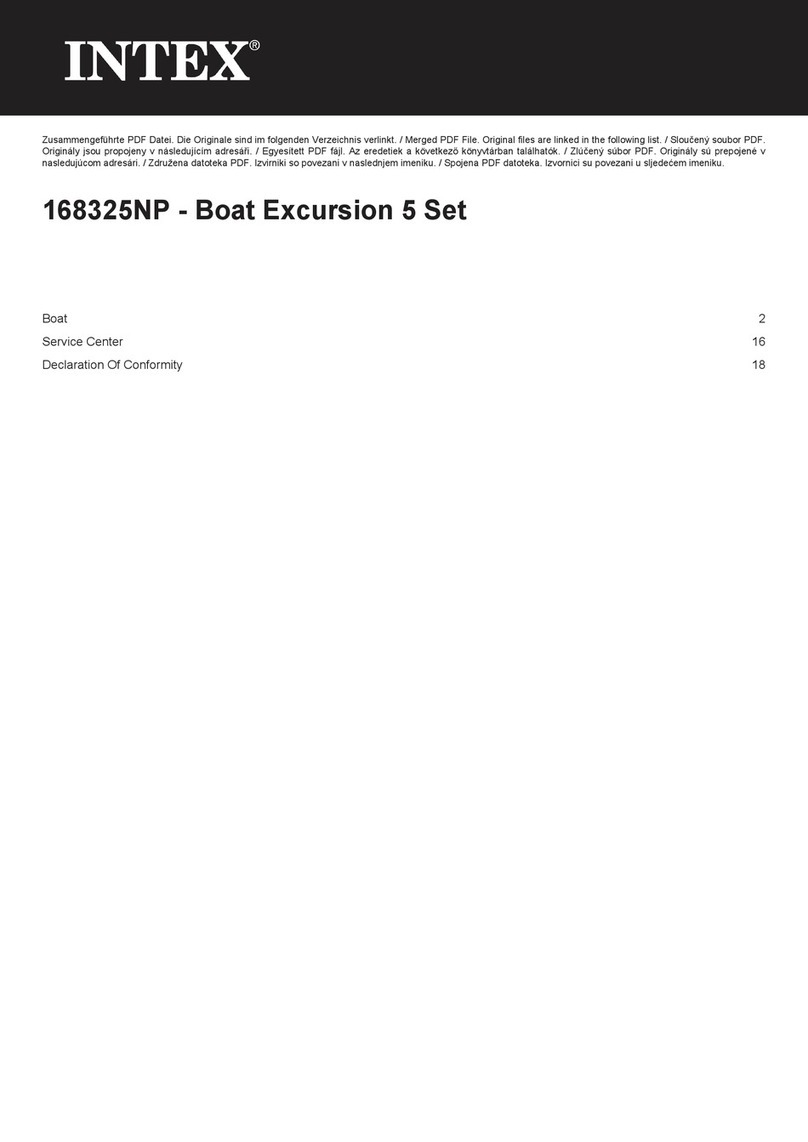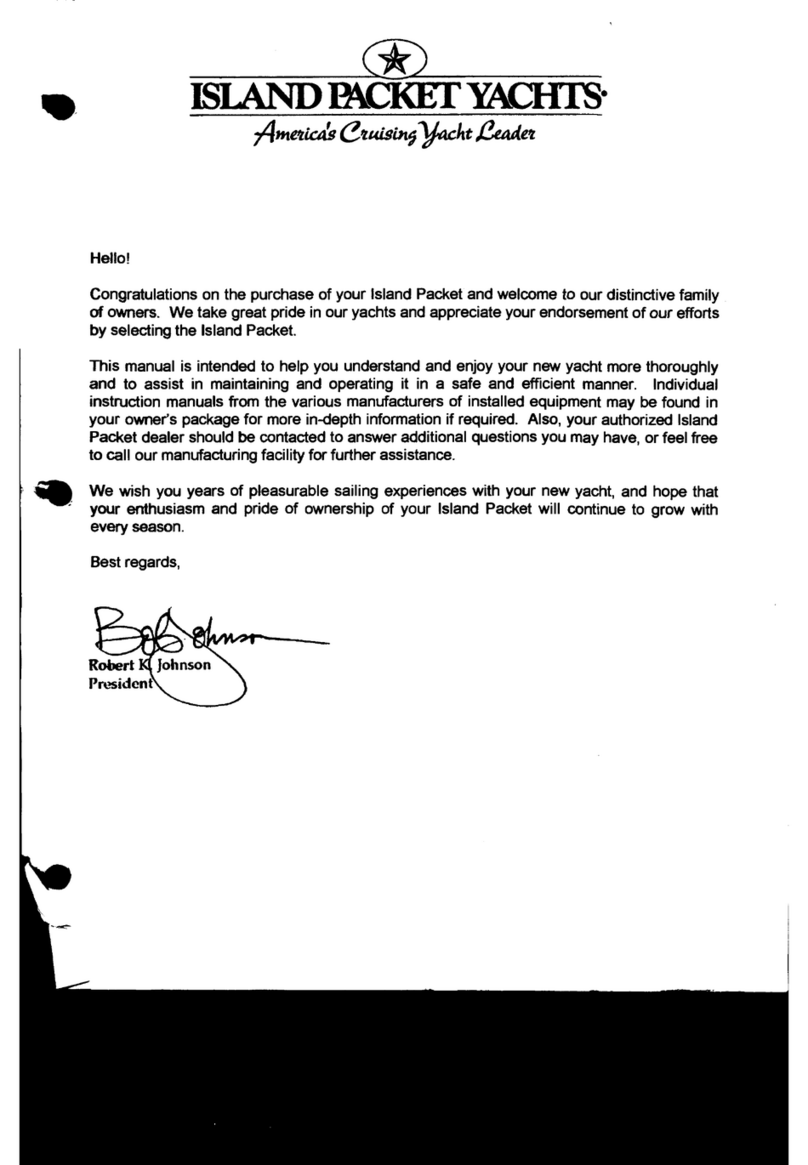
2. LIMITED WARRANTY
2
Hunter offers a limited warranty on every Hunter boat sold through an authorized Hunter dealer. A copy of this warranty
is included here, and in your User's Manual. If for some reason you are not able to understand, read, or view this
manual, please contact your local dealer for a replacement copy.
We stand behind the quality of your boat with a warranty, which you should review. To ensure the operation and
validity of your limited warranty, please complete the attached card and send it to us within ten (10) days of the
purchase date. Section 15 of the U.S. Federal Boat Safety Act requires registration of a boat’s first owner. The
warranty data should also be recorded in the space below for your own reference.
The following warranties apply to all 2011 Model Year boats produced by
HUNTER MARINE CORPORATION:
LIMITED ONE-YEAR WARRANTY
Hunter Marine warrants to the first-use purchaser and any subsequent owner during the limited warranty period that
any part manufactured by Hunter will be free of defects caused by faulty workmanship or materials for a period of
twelve (12) months from the date of delivery to the first-use purchaser under normal use and service. During this
period, as the sole and exclusive remedy, Hunter's obligation under the warranty is limited to the repair or replacement
of any such defective part.
LIMITED FIVE-YEAR HULL STRUCTURE AND BOTTOM BLISTER WARRANTY
Hunter warrants to the first-use purchaser and any subsequent owner during the limited warranty period that the hull of
each boat will be free from structural defects in materials and workmanship for a period of five (5) years from the date
of delivery to the first-use purchaser under normal use and service.
This limited warranty applies only to the structural integrity of the hull and the supporting pan/grid or stringer system.
Hulls, pan/grid or stringers modified in any way or powered with engines other than the type and size installed or
specified by Hunter are not covered by this limited warranty. As the sole and exclusive remedy, Hunter's obligation
under the warranty is limited to repair or replacement of any such defective part.
Hunter also warrants to the first-use purchaser and any subsequent owner during the limited warranty period that the
boat will be free from gelcoat blistering on underwater surfaces of the hull, excluding the keel and rudder, for a period
of five (5) years from the date of delivery to the first-use purchaser under normal use and service. During this period,
Hunter will supply or reimburse an authorized Hunter dealer for all of the parts and labor required to repair a blistered
underwater surface of the hull. The labor cost reimbursement will be based on the Labor Allowance Schedule
established by Hunter from time to time; however, if the repair is performed by a non-Hunter dealer, the repair cost
must be authorized by Hunter in advance and be based on a reasonable number of hours as determined by Hunter.
Hunter will not pay transportation, hauling, launching, bottom paint, storage, dockage, cradling rental, rigging and
derigging, or other similar costs. It is recommended that the repair be done during a seasonal haul-out for service or
storage.
PLEASE KEEP THIS MANUAL IN A SAFE PLACE AND HAND OVER TO THE NEW
OWNER IF YOU SELL THE CRAFT






